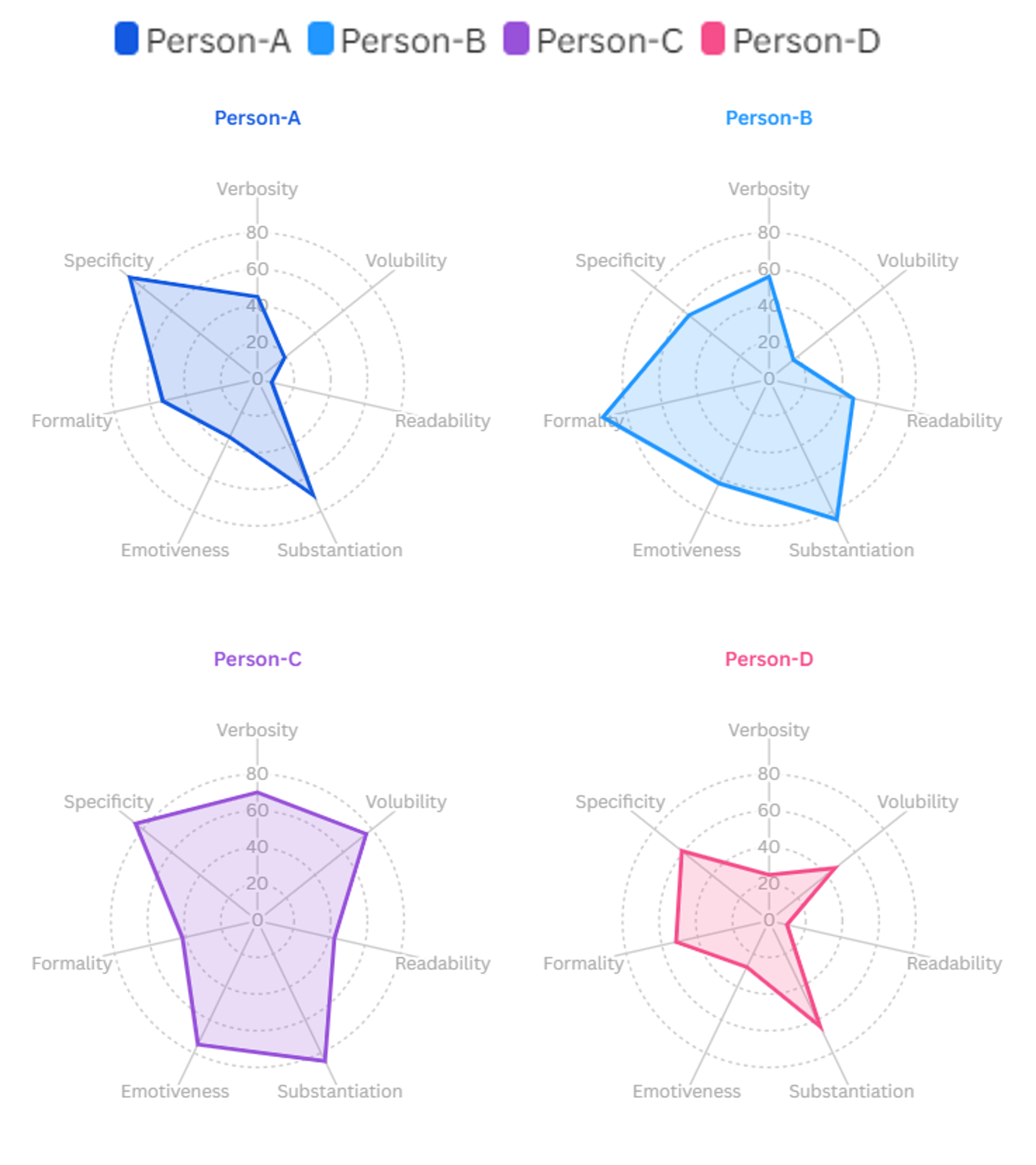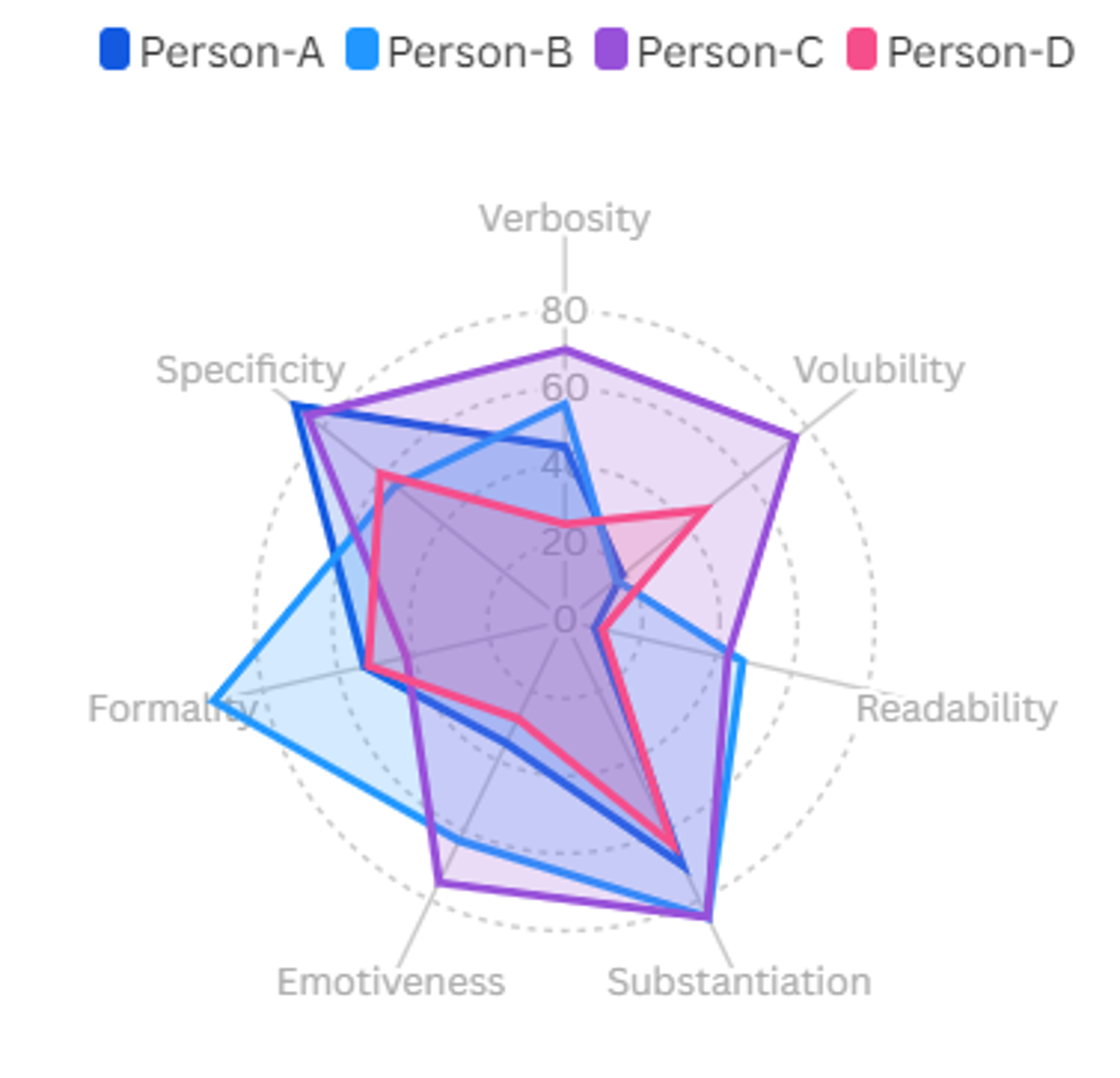LINGA is a psycholinguistics technology company – the first of its kind. Our revolutionary technology introduces an entirely new category of innovations that range from AI safety to identity management.
LINGA is a psycholinguistics technology company that provides authorship identity verification as a service via our proprietary Linguistic FingerprintTM technology. Through the LINGA web application, guests complete writing prompts in order to build their Linguistic FingerprintTM. Once built, guests can discover their true selves as expressed in the form-factor of writing. Guests can also scan written documents in order to generate a unique Authorship Verification Certificate, which is certified by LINGA and available as a downloadable PDF file. This certificate indicates whether or not the scanned document matches our guest's Linguistic FingerprintTM, and is backed by our $1,000,000 Authorship Integrity Defense GuaranteeSM · Terms apply. Individual guests can use LINGA to verify and defend authorship integrity for important written works like books, articles, papers, speeches, and more.
LINGA is proud to introduce a remarkable innovation that is both psycholinguistics and computer science – and something in between. It is the culmination of seven years of proprietary research.
LINGA solves the problem of authorship identity verification. That is, we can verify whether you wrote something or not with a high degree of statistical accuracy. We shared details about this in a whitepaper we produced. The abstract is below:
LINGA solves the problem of authorship identity verification by means of advanced computational psycholinguistic analyses of grammatical patterns. We convert said patterns into numerical values and compute an entire linguistic profile of a given individual. That is, we convert words to numbers, derive statistical patterns between those numbers, and use these data in order to differentiate individuals.
By collecting individual datum points about writing patterns, we can normalize the values on a scale of 0–100 in order that we can visualize it.

Based on select factors, the radar chart below produces a geometric shape. This shape is unique to the individual, and changes over time according to other mathematical models we have developed. When we compare the shape of a given person‘s linguistic profile against another, we see that they are represented differently.

And by means of these mathematical operations, we can deliver statistical certainty as to whether Person-A actually wrote Text-A, and not a chatbot or someone else.
Yes, LINGA can detect whether you or an AI chatbot wrote something. Our technology also empowers us to differentiate you from other individuals – even if your writing styles are similar.
LINGA Co. is a Delaware corporation and was formed on January 2, 2025, by Boban Dedović as a way to protect the integrity of a given author's written works.
The vision of LINGA is to protect the integrity/authenticity of someone’s intended communications such that these are non-issues. Our daily mission is to provide tools, services, and innovative psycholinguistic-research driven products that help people protect authorship integrity with respect to written communications and publications. The values we try to embody include: Linguistic prowess; Integrity; Noeticism; Generational thinking; and Agility.
You can contact LINGA Co. using the options available below. Our response time will depend on the nature and urgency of your request. If you are an existing guest, please reach out to your dedicated Guest Concierge.